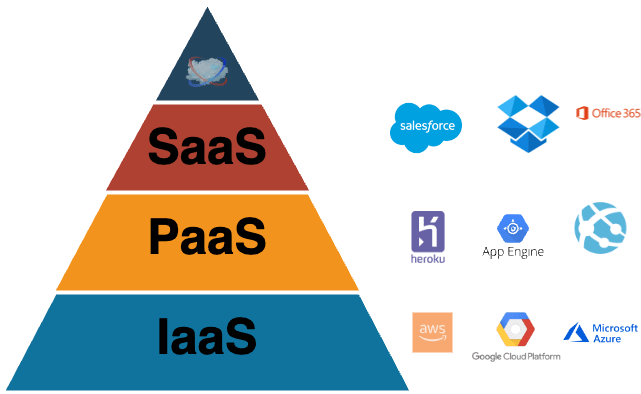CLOUD COMPUTING
Advantages and Benefits of Cloud Computing
Cloud computing offers a range of advantages and benefits for AWS (Amazon Web Services) and its customers. Here are some of the key advantages and benefits of cloud computing for AWS:
Scalability: AWS cloud computing services can be easily scaled up or down according to the changing needs of businesses. This means that businesses can easily accommodate growth or handle sudden surges in demand without the need for additional hardware or infrastructure.
Cost Savings: With AWS, businesses only pay for the resources they use, which can help to reduce costs significantly. Additionally, AWS offers a pay-as-you-go pricing model, which means that businesses don't have to make any upfront investment in hardware or infrastructure.
Reliability: AWS offers a highly reliable and available cloud infrastructure that can help businesses achieve high levels of uptime and availability. This is achieved through the use of multiple availability zones, automatic failover, and redundant infrastructure.
Security: AWS provides a secure cloud environment that is compliant with a variety of security standards, including ISO 27001, SOC 1/2/3, and PCI DSS. Additionally, AWS offers a variety of security features, such as encryption, network isolation, and identity and access management.
Flexibility: AWS offers a wide range of cloud services that can be customized to meet the specific needs of businesses. This includes services for computing, storage, networking, and databases, as well as tools for application development, monitoring, and analytics.
Global Reach: AWS has a global network of data centers, meaning businesses can quickly deploy their applications and services in multiple regions worldwide. This can help to improve performance, reduce latency, and provide a better experience for users.
Innovation: AWS is constantly introducing new services and features to help businesses stay ahead of the curve and drive innovation. This includes services for artificial intelligence, machine learning, and the Internet of Things (IoT), among others
Overall, cloud computing offers a range of advantages and benefits for AWS and its customers, including scalability, cost savings, flexibility, security, reliability, and innovation.
Types of Cloud Computing
There are three main types of cloud computing services:
Infrastructure as a Service (IaaS):
IaaS provides customers with virtualized computing resources, such as servers, storage, and networking, over the internet. This means that customers can create and manage their applications and software without the need to build and maintain their infrastructure. IaaS providers typically offer a range of services, such as virtual machines, storage, load balancing, and network services. Customers can scale their resources up or down as needed and pay only for what they use. Examples of IaaS providers include Amazon Web Services (AWS), Microsoft Azure, and Google Cloud Platform (GCP).Platform as a Service (PaaS):
PaaS provides customers with a platform to develop, run, and manage their applications without the need to build and maintain the underlying infrastructure. PaaS providers typically offer a range of services, such as application servers, databases, and development tools. Customers can focus on their application development while the PaaS provider manages the underlying infrastructure. PaaS providers also typically offer scalability and availability features to ensure that the applications are available and performant. Examples of PaaS providers include Heroku, Google App Engine, and Microsoft Azure App Service.Software as a Service (SaaS):
SaaS provides customers with access to software applications over the internet. Customers access the applications through a web browser or app and do not need to install or maintain any software on their own devices. SaaS providers manage all aspects of the software, including maintenance and upgrades. SaaS providers typically offer a range of applications, such as email, collaboration tools, customer relationship management (CRM), and enterprise resource planning (ERP) systems. Examples of SaaS providers include Salesforce, Dropbox, and Office 365.
In addition to these three types, hybrid cloud and multi-cloud solutions are becoming increasingly popular. Hybrid cloud solutions combine different cloud computing models to meet the specific needs of an organization, while multi-cloud solutions use multiple cloud providers to avoid vendor lock-in and provide redundancy and disaster recovery capabilities.
Cloud Computing Deployment Models
Cloud: AWS provides a wide range of cloud computing services that can be accessed over the internet and are available on a pay-as-you-go or subscription basis. An example of a cloud-based deployment with AWS is a company that wants to deploy a web application using Amazon Elastic Compute Cloud (EC2) instances and store their data in Amazon Simple Storage Service (S3). They can create and configure their resources using the AWS Management Console or API, and the resources can be scaled up or down as needed.
Hybrid: AWS provides several services and tools to support hybrid cloud deployments, which combine public cloud and on-premises infrastructure. An example of a hybrid deployment with AWS is a company that wants to run its applications on-premises but uses AWS services for backup and disaster recovery. They can use AWS Storage Gateway to connect their on-premises applications to AWS storage services and use AWS Direct Connect to establish a dedicated network connection between their on-premises infrastructure and AWS.
On-Premises: AWS also provides a range of services and tools to support on-premises deployments. An example of an on-premises deployment with AWS is a company that wants to run AWS infrastructure on-premises using its hardware. They can use AWS Outposts to deploy and run AWS services on-premises, such as Amazon Elastic Compute Cloud (EC2), Amazon Relational Database Service (RDS), and Amazon Elastic Kubernetes Service (EKS). This allows them to benefit from the scalability and flexibility of AWS infrastructure while keeping their data on-premises.
Overall, AWS provides a range of deployment options to meet the needs of different organizations and scenarios, whether they need a fully cloud-based solution, a hybrid deployment that combines cloud and on-premises infrastructure, or an on-premises deployment with connections to AWS.





Top comments (0)